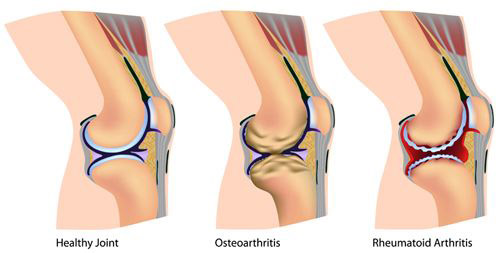 Arthritis commonly affects the joints by changing the physiology of the cartilage which subsequently decreases the joint lubrication and alters the mechanics of the joint. The most common arthritis is osteoarthritis also known as degenerative arthritis or "old age" arthritis. Other forms of arthritis include rheumatoid arthritis (deforming arthritis), septic arthritis (after infections) and traumatic arthritis to just name a few.
Arthritis commonly affects the joints by changing the physiology of the cartilage which subsequently decreases the joint lubrication and alters the mechanics of the joint. The most common arthritis is osteoarthritis also known as degenerative arthritis or "old age" arthritis. Other forms of arthritis include rheumatoid arthritis (deforming arthritis), septic arthritis (after infections) and traumatic arthritis to just name a few.
How does this happen?
Genetic predisposition and abnormal mechanical loads can trigger changes in the joint that ultimately will result in decreased range of motion, pain with motion, swelling and deformity of the joints, which are typical symptoms of arthritis. All these symptoms will affect the ability to do simple activities of daily living such as walking, going up and down stairs, squatting and kneeling.
How will we know this is your problem?
The diagnosis of arthritis is usually made through a combination of your medical history, family history and physical examination. Your physician may order diagnostic tests, such as blood work, x-rays and MRI, which will help rule out other problems and confirm the diagnosis.
How can this be treated?
The initial treatment of arthritis can include rest, ice, modification of daily routines that trigger the joint pain, along with anti-inflammatory medication and physical therapy. The use of braces is controversial but often used. The next step of conservative treatment consists of intra-articular injections such as steroid injections. When non-operative treatment is unsuccessful, then surgical treatment is the next option. The surgical treatment can consist of a variety of procedures including arthroscopy (looking and working inside the joint through small incisions), osteotomy (correction of deformities) and arthroplasty (joint replacement). Joint replacements are among the most successful surgical treatments known to man. The term joint replacement is a misnomer since the joint is not really replaced, but is resurfaced with a combination of metal and plastic. This resurfacing will replace the worn out cartilage and will allow for proper joint function without pain.
For more specific information on Arthritis, please select from the following:
